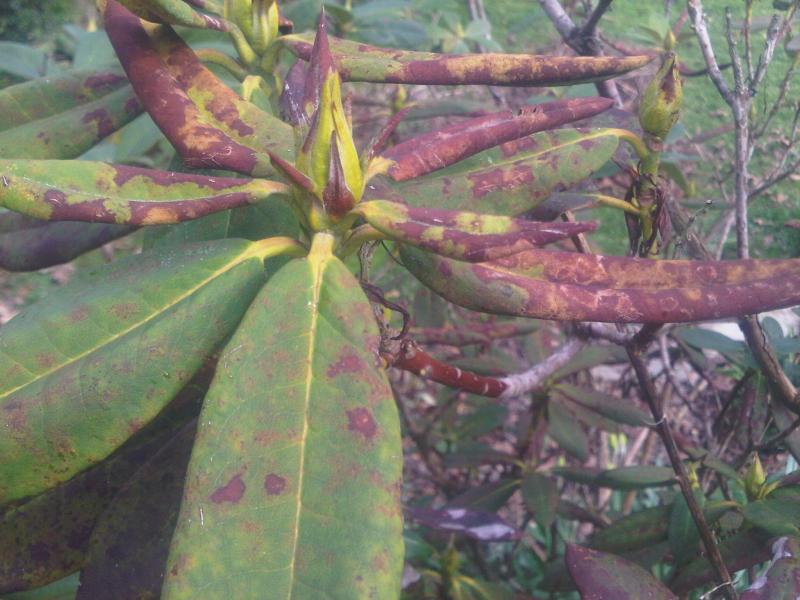Phytophthora Blight (Late Blight)

Lilacs, rhododendrons, azaleas, and holly infected by Phytophthora fungi suffer dieback of shoots and develop stem cankers. Prune to remove infected branches and to increase air movement.
On peppers, potatoes, and tomatoes, Phytophthora infection is known as late blight. The first symptom is water-soaked spots on the lower leaves. The spots enlarge and are mirrored on the undersurface of the leaf with a white downy growth. Dark-colored blotches penetrate the flesh of tubers. These spots may dry and appear as sunken lesions. During a wet season, plants will rot and die. The pathogen overwinters on infected tubers and in plant debris. Avoid problems by planting only in well-drained soil, and use resistant varieties if possible. For late blight, keep foliage dry as much as possible, and check frequently for symptoms whenever the weather is wet. Preventive sprays of compost tea or Bacillus subtilis may help prevent the disease. Immediately remove and destroy plants infected with late blight; prune off cankered shoots of shrubs. After harvest, remove and destroy all plant debris that may be infected.

